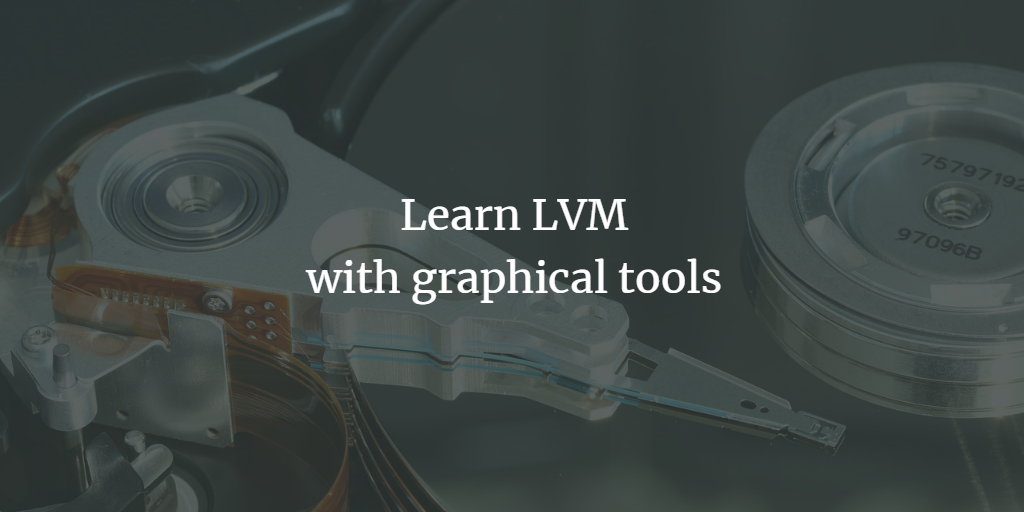LVM, or Logical Volume Management, is a widely used storage model in Linux architectures, encompassing PCs, NAS, and servers. Its utility is well-recognized in managing large pools of storage with flexibility and performance equivalent to a server-level. Despite numerous tutorials available online, they often focus on command-line tools, which can be complex and unintuitive, especially for beginners. This guide aims to demystify LVM’s concepts and operations through the use of graphical tools.
Concepts of LVM
1. What is LVM?
LVM, or Logical Volume Management, is a solution for Linux that offers scalable and highly flexible storage management. It allows users to achieve high performance and secure storage systems cost-effectively. For individual users and small server setups, LVM supports various RAID configurations and storage pools’ creation and management. Advanced users can employ LVM for distributed storage services.
2. Physical Volume (PV)
PVs form the foundation of LVM. Similar to disks in a RAID array, they can be created using whole disks or partitions. Configuration information is stored on each PV, which is crucial for both detection and recovery operations by tools like the Linux kernel.

The host devices of PVs – Examples of partitioning across different disks.
3. Volume Group (VG)
VGs manage groups of LVs and PVs. After configuring a VG, users can migrate it between different systems without additional setup requirements. Multiple VGs are possible within a single system.
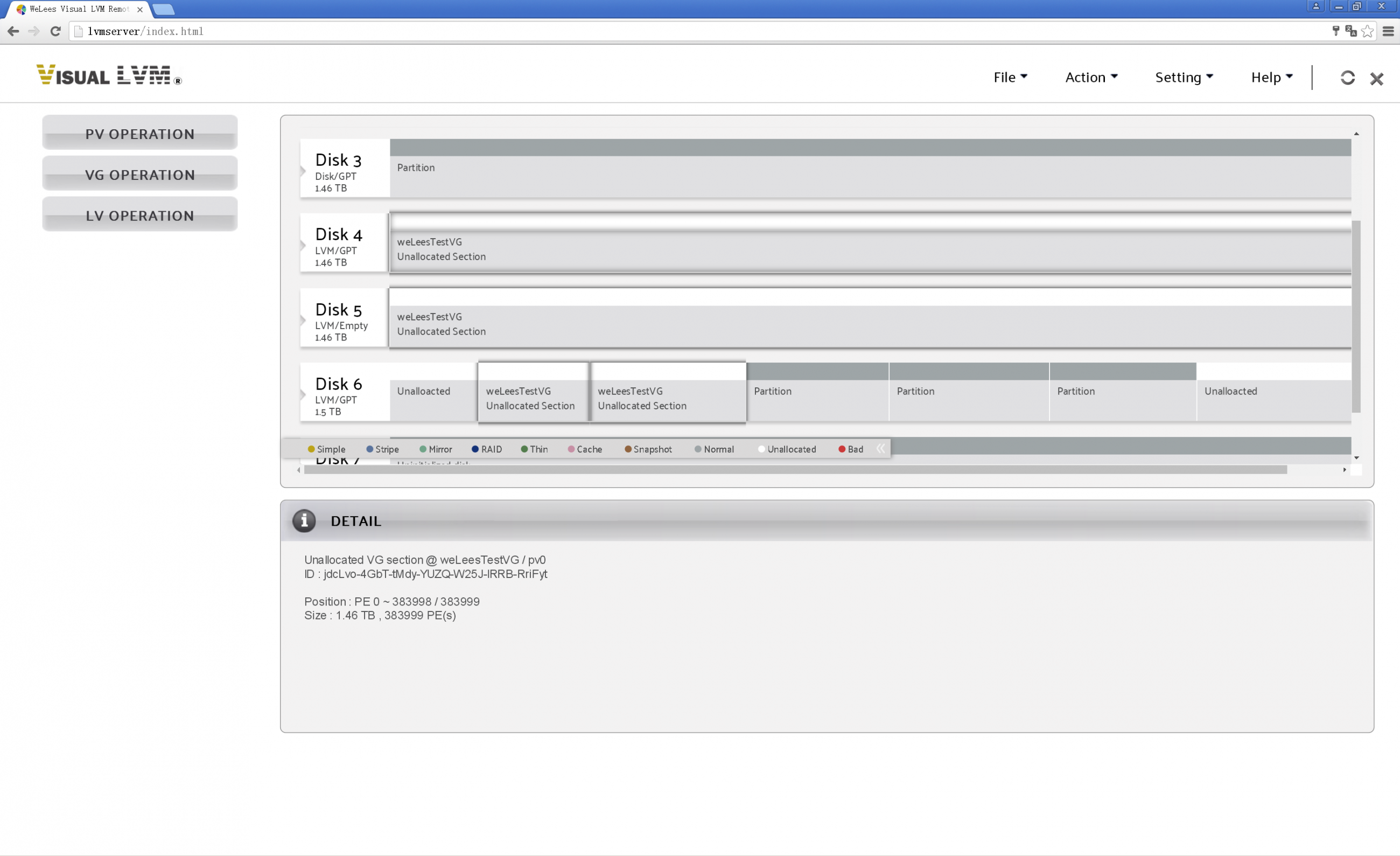
VG consisting of multiple partitions and disks.
4. Logical Volume (LV)
LVs are user-created volumes based on specific requirements and can be mounted directly. They leverage LVM’s extensive features, including performance optimizations and security enhancements.
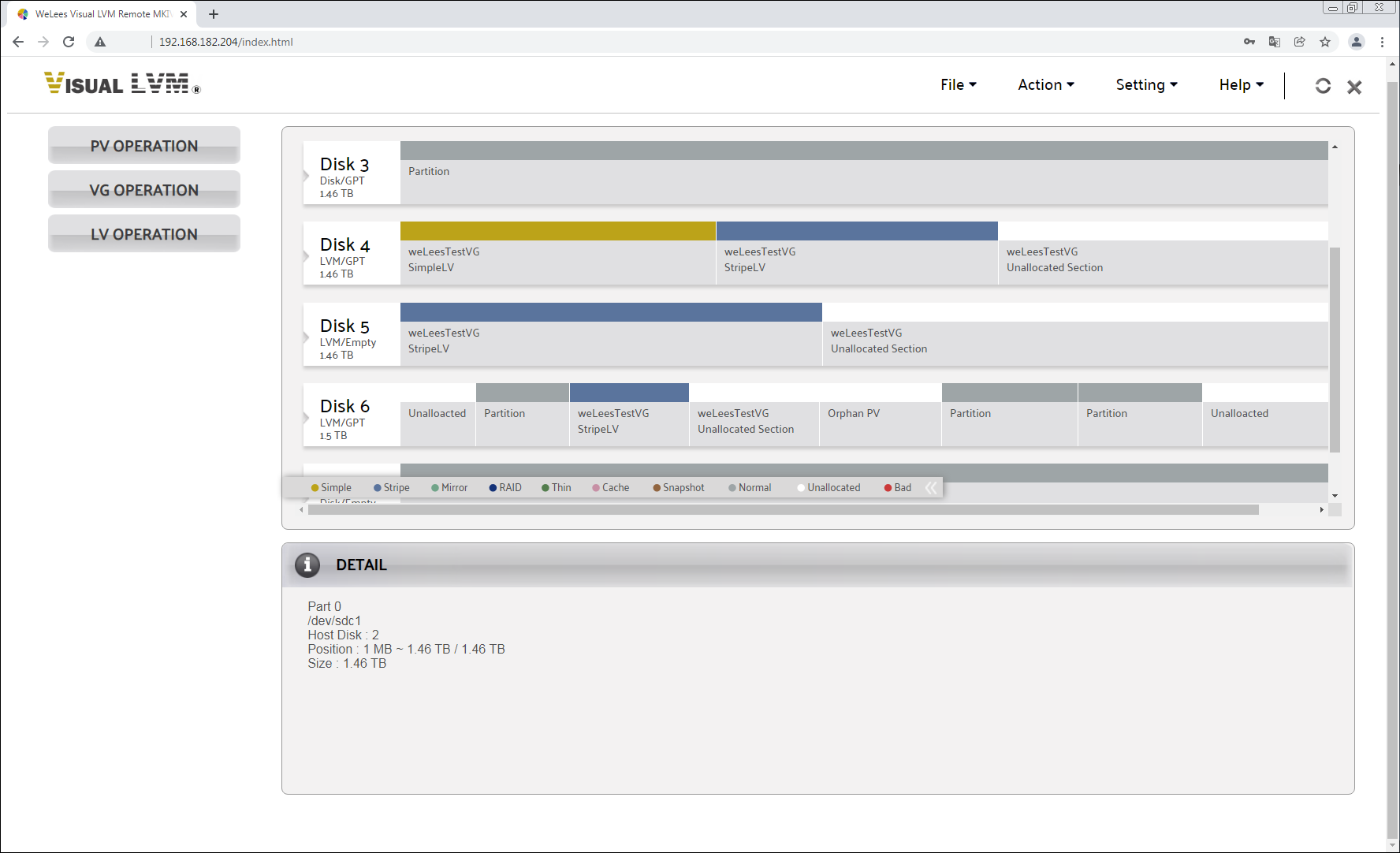
VG with two LVs: a simple type and a RAID 0 type.
5. Physical Extent (PE) & 6. Logical Extent (LE)
PE refers to a PV’s allocation unit, often set to 4MB by default, although this can be adjusted. LE is analogous to PE for LVs, requiring that an LV’s size be a multiple of LE.
Operations Using LVM Graphic Tools
1. PV Operations
To begin with LVM, you need to create, manage, and delete PVs. Here’s a step-by-step guide:
1.1 Create PV
Begin creating PVs by selecting desired disks/partitions. Example:
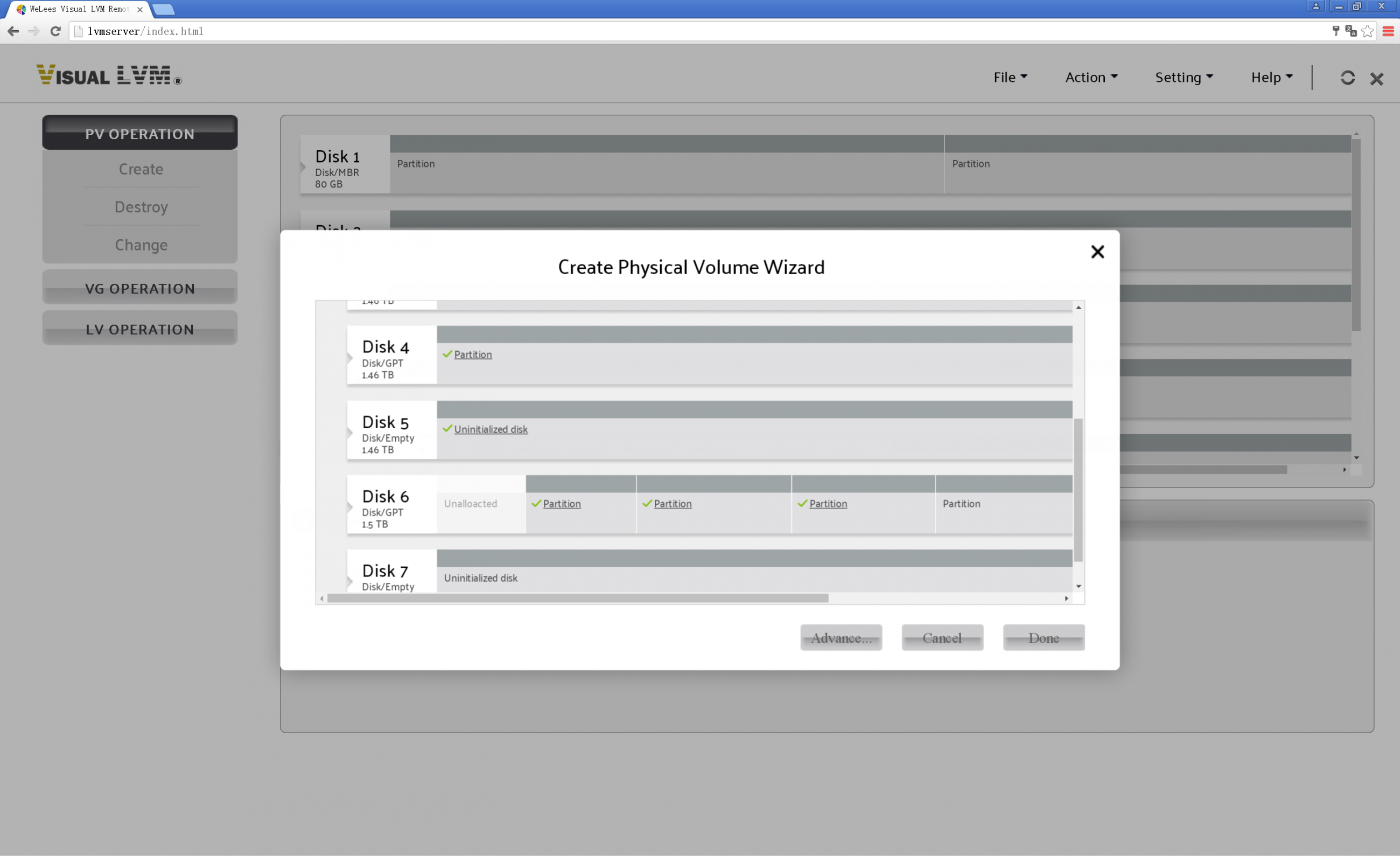
Select disks/partitions to create PVs.
1.2 Delete PV
Deleting a PV is straightforward. Simply select the PV, choose the Delete operation, and confirm your choice. Note that PVs in a VG must be removed from the VG first.
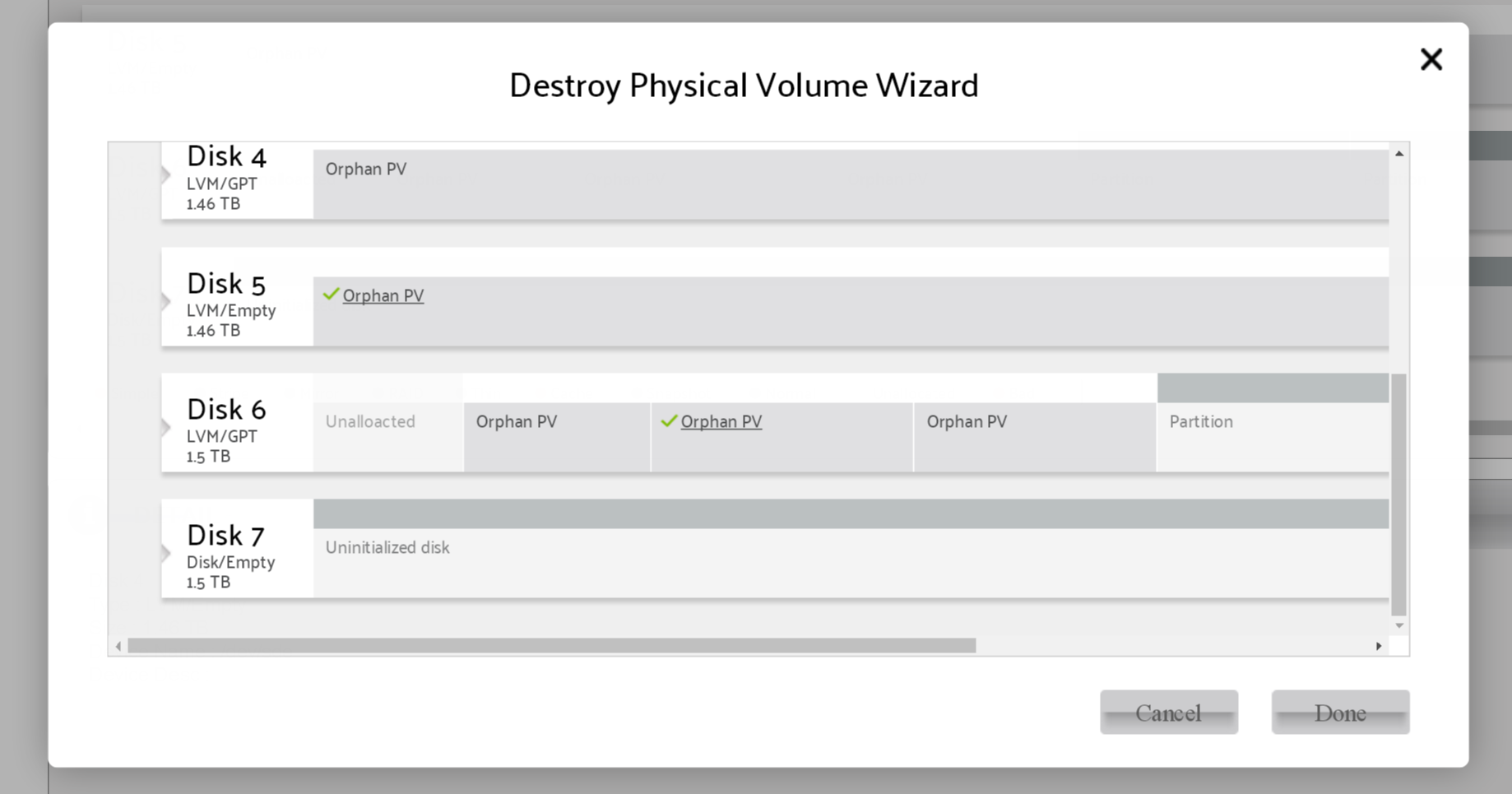
Deleting selected PVs from the system.
2. VG Operations
VGs can be managed through a series of operations, including creation, deletion, and configuration:
2.1 Create VG
To create a VG, choose the Create option and select your PVs, specifying any advanced settings as required.
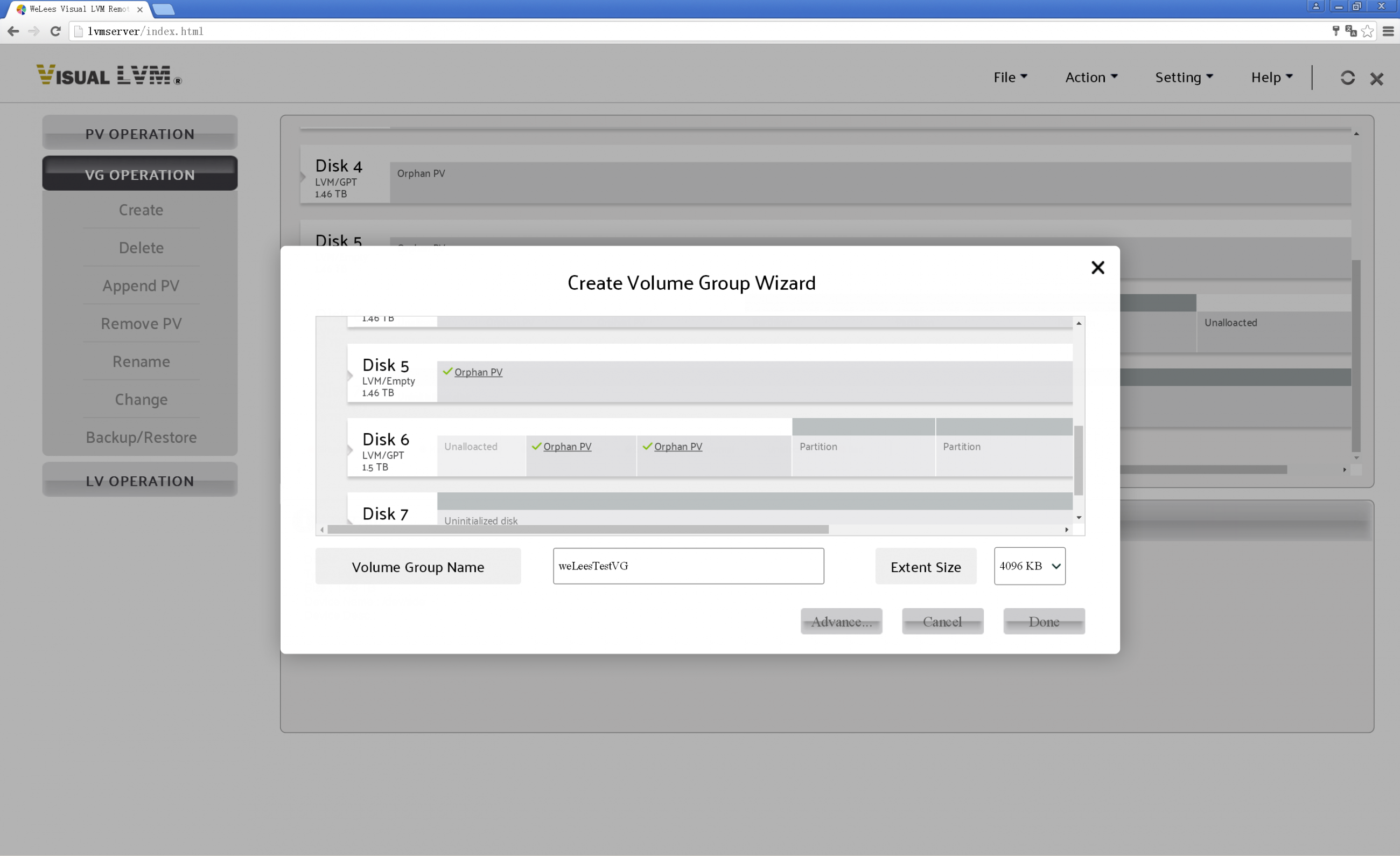
Creating a VG with selected PVs.
2.2 Delete VG
Deleting a VG is done through the Delete option after ensuring all LVs within it have been deleted.
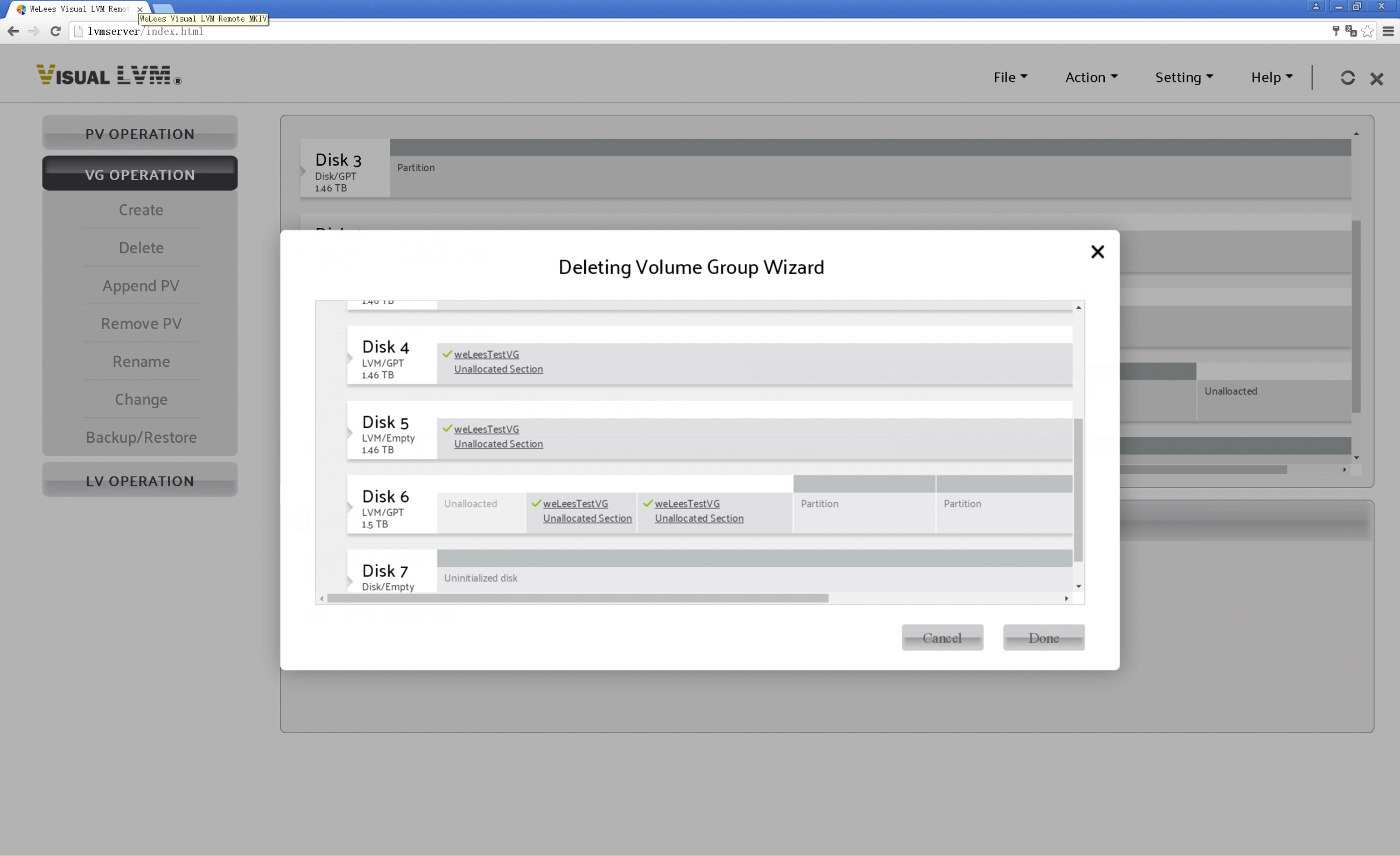
Delete VG dialog.
3. LV Operations
Creating and manipulating LVs is a crucial part of using LVM:
3.1 Create LV
Utilize the LV Creation dialog to select PVs, define LV type, and adjust other parameters to create an LV according to needs like RAID level and size.
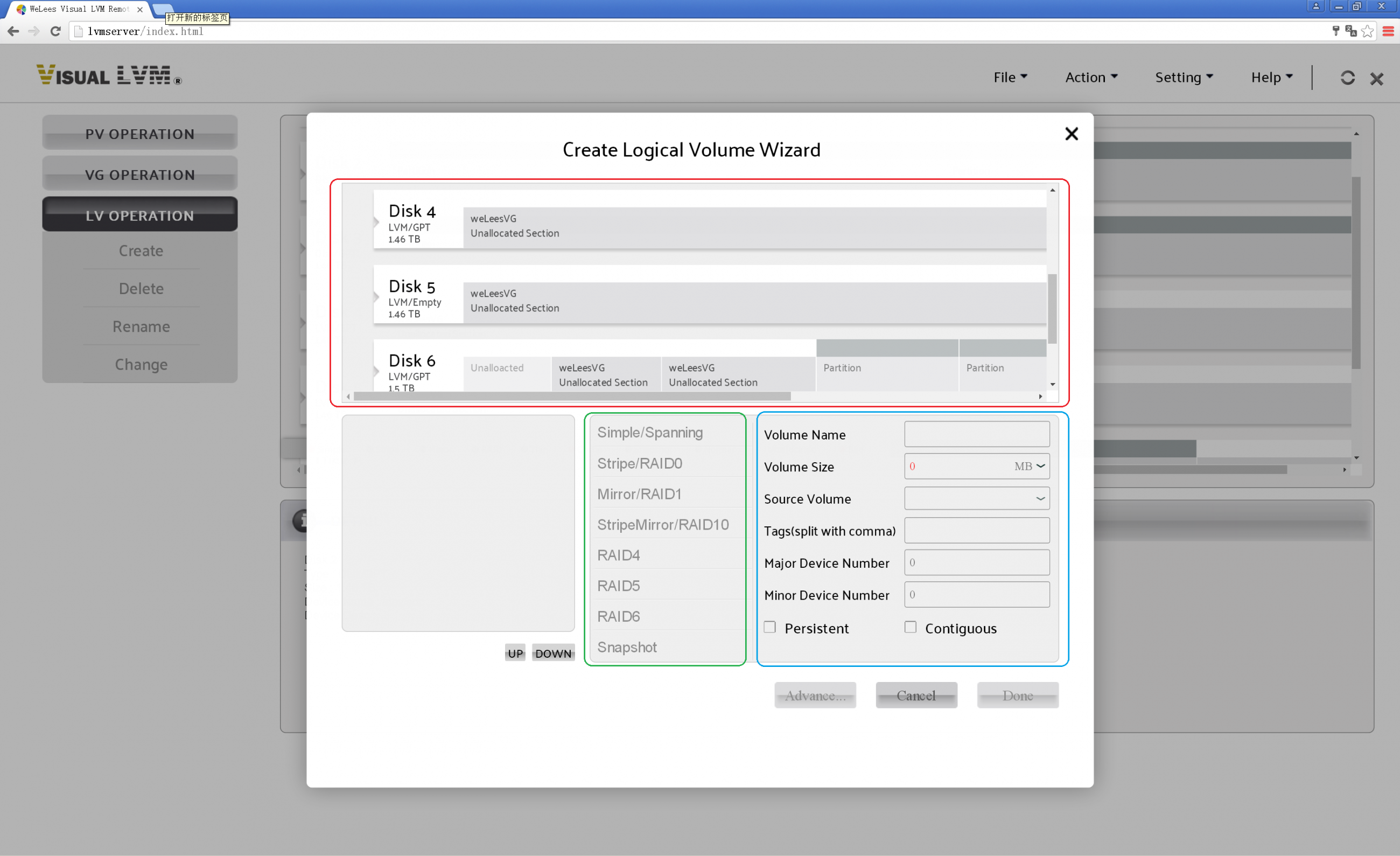
RAID type LV creation requires specific configurations for proper operation.
Conclusion
This guide covered the foundational concepts of LVM and practical operations via graphical tools. Visual management of LVM simplifies the process significantly, making it accessible to beginners and reducing complexity for advanced users. With modern tools like Visual LVM Remote, LVM administration has become more convenient and intuitive.
FAQ
1. What is the advantage of using LVM over traditional partitioning?
LVM provides greater flexibility in managing disk storage as it allows for dynamic resizing of disk space, creating snapshots, and managing multiple disks as a single storage unit.
2. Can I convert existing partitions to LVM?
Yes, non-LVM partitions can be converted to LVM through careful data backup and reconfiguration, though this is more complex and requires some downtime.
3. What are the system requirements for using Visual LVM Remote?
Visual LVM Remote requires network connectivity and can be managed without a physical graphical interface, making it compatible even with remote servers.
4. Is LVM suitable for non-server environments?
Absolutely! LVM is beneficial for any system where flexible and scalable storage is a priority, enabling users to expand storage capacity as needed easily.
